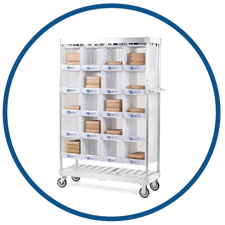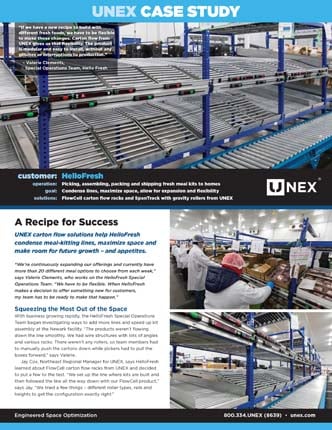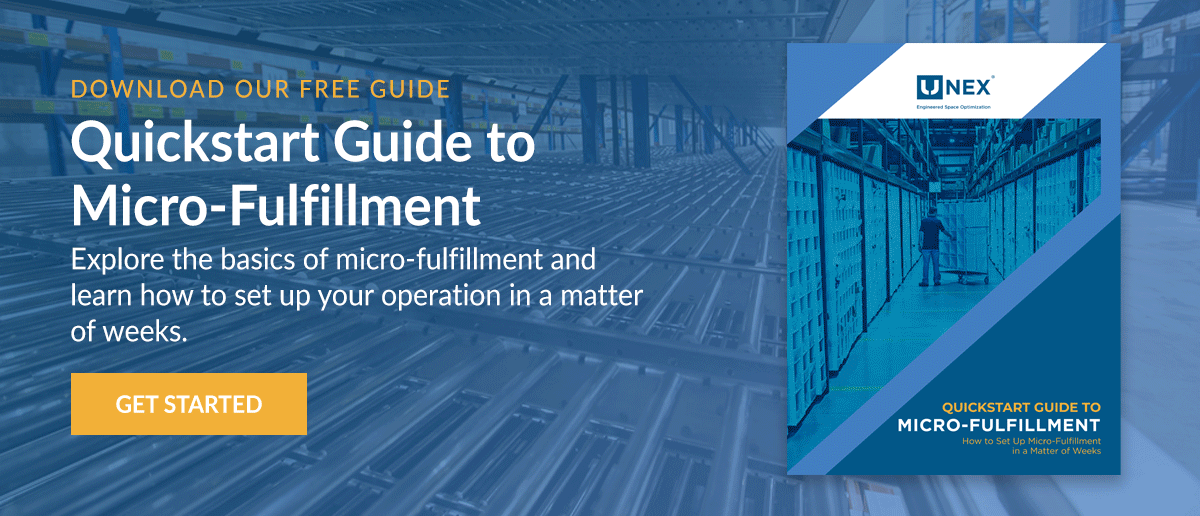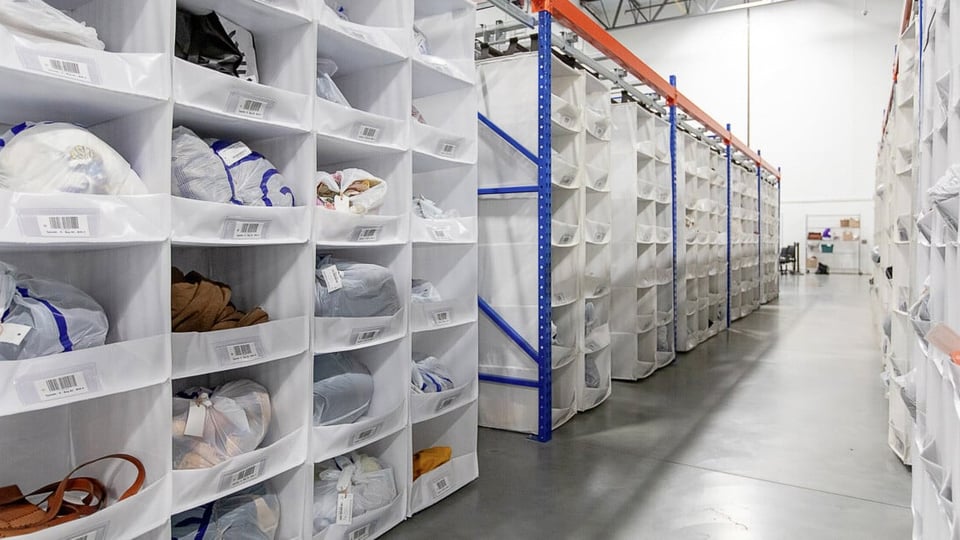eCommerce Strategies for Streamlining BODFS Order Fulfillment

BOPIS, BORIS, BOSS, and now BODFS — What does it all mean and how can retailers keep up?
BOPIS, BORIS, BOSS, and BODFS are just a few acronyms that are commonly used across eCommerce omnichannel fulfillment and retail fulfillment settings. They refer to the different fulfillment methods customers can choose when shopping online. So if you’ve ever purchased something from, let’s say, Target, you’ve probably noticed you have a few options to choose for pickup or delivery.
Let’s break it down:
- BOPIS: Buy online pickup in store
- BORIS: Buy online return in store
- BOSS: Buy online ship to store
- BODFS: Buy online deliver from store
What is BODFS?
BODFS is a method of order fulfillment where customers can buy items online and have those items shipped directly to their homes. Pretty straightforward, right? But what makes BODFS, well, BODFS, is what happens after the order is placed. This part doesn’t matter much to the consumer, but behind the scenes, a local retail location will actually pick the order from their stock, package it, and deliver or ship it to the customer’s home.
Traditionally, online orders would come from a central warehouse like a larger fulfillment center, but to keep up with increasing consumer demands, more and more retailers are expanding their fulfillment options to include more choices than ever before. BODFS is a micro-fulfillment method where the store itself acts as the fulfillment center as opposed to a larger warehouse location that’s probably much farther away from the store, and thus, the end-consumer’s delivery address.

How Retailers Can Prepare to Handle BODFS
While BODFS has been around for quite some time, it is growing in popularity, thanks to (surprise!) the Amazon effect. However, many retailers are still not prepared to fully handle the demands of BODFS. Like other fulfillment methods, retailers need a plan, and adding BODFS to the mix involves integrating shipping/delivery processes in-store.
Stores are already using retail backrooms and customer pickup areas as mini fulfillment centers within brick-and-mortar locations. Now they need to worry about throwing last mile delivery practices into the mix. So you can see how this can quickly create chaos in an already bustling environment.
Challenges Retailers Face in Managing BODFS
The key difference when it comes to BODFS is adding shipping to your fulfillment operations at the retail location. All the other popular eCommerce fulfillment methods don’t involve the retail stores themselves actually shipping from the store. This can be particularly challenging because, as anyone who works in logistics can attest, shipping can be complicated!
There are many considerations to make, from increasing SKU storage and setting up packing and staging areas to having a plan for loading delivery trucks, scheduling deliveries, and making these processes predictable and repeatable. A few of the biggest challenges retailers face in managing BODFS are:
SKU storage — Ensuring you have enough storage space in your retail backroom to accommodate an increase in SKUs that now need to be shipped from the store.
Optimizing fulfillment processes — Picking, packing, and staging to work in the final element that will allow you to achieve BODFS — shipping/local delivery.
Becoming last mile delivery experts — The last mile is a critical point in the order fulfillment process that leaves a lasting impression on customers. Best not to screw it up!
Steps Retailers Can Take to Effectively Manage BODFS
Optimize SKU Storage in Your Retail Backroom
When adding more fulfillment methods, an increase in SKUs is inevitable. Now you need to store more SKUs that are eligible for this new fulfillment method, but where are you going to put them? If your retail backroom is filled with static shelving, it may be time to consider a dynamic solution that will allow you to fit more SKUs in your existing footprint. Consider replacing wire decking in pallet racking with SpanTrack carton flow and/or SpeedCell dynamic high-density storage.

Optimal Solutions from UNEX for Maximizing SKU Storage
When it comes to maximizing SKU storage for efficient order fulfillment, UNEX offers a number of solutions that can revolutionize your retail backroom operations.
 SpanTrack Lane: SpanTrack Lane is a high-density carton flow solution designed to maximize storage efficiency and accessibility. This system is ideal for operations that require precise, organized storage with easy access to cartons and totes. SpanTrack Lane can be easily added to new or existing pallet racks without the need for shelves or intermediate support, making it highly versatile. Its superior flexibility accommodates a wide range of product sizes and weights, ensuring smooth, gravity-fed flow and reducing product hang-ups. Engineered to withstand the rigorous demands of active warehouses, SpanTrack Lane provides long-term durability and reliable performance.
SpanTrack Lane: SpanTrack Lane is a high-density carton flow solution designed to maximize storage efficiency and accessibility. This system is ideal for operations that require precise, organized storage with easy access to cartons and totes. SpanTrack Lane can be easily added to new or existing pallet racks without the need for shelves or intermediate support, making it highly versatile. Its superior flexibility accommodates a wide range of product sizes and weights, ensuring smooth, gravity-fed flow and reducing product hang-ups. Engineered to withstand the rigorous demands of active warehouses, SpanTrack Lane provides long-term durability and reliable performance.
 SpanTrack Wheel Bed: SpanTrack Wheel Bed is another high-density carton flow solution that uses a bed of staggered wheels that can accommodate cartons and totes of various sizes, making it ideal for operations with a diverse range of products. This solution ensures a smooth flow of items and can be integrated into any existing pallet rack structure, enhancing storage density and picking efficiency. The robust construction of SpanTrack Wheel Bed can handle high-volume picking environments, minimizing product damage and increasing throughput.
SpanTrack Wheel Bed: SpanTrack Wheel Bed is another high-density carton flow solution that uses a bed of staggered wheels that can accommodate cartons and totes of various sizes, making it ideal for operations with a diverse range of products. This solution ensures a smooth flow of items and can be integrated into any existing pallet rack structure, enhancing storage density and picking efficiency. The robust construction of SpanTrack Wheel Bed can handle high-volume picking environments, minimizing product damage and increasing throughput.
 SpeedCell: A dynamic high-density shelving solution that can increase storage density up to 60%! SpeedCell is a high-density storage solution that converts unused space within pallet racks into organized, SKU-dense storage. By compressing storage space, SpeedCell increases storage density and reduces picker travel time. Each cell is equipped with a location label holder, making it easy for workers to locate products quickly and efficiently. SpeedCell is designed to improve picking efficiency and maximize the use of available storage space, making it ideal for operations with a large number of SKUs.
SpeedCell: A dynamic high-density shelving solution that can increase storage density up to 60%! SpeedCell is a high-density storage solution that converts unused space within pallet racks into organized, SKU-dense storage. By compressing storage space, SpeedCell increases storage density and reduces picker travel time. Each cell is equipped with a location label holder, making it easy for workers to locate products quickly and efficiently. SpeedCell is designed to improve picking efficiency and maximize the use of available storage space, making it ideal for operations with a large number of SKUs.
Re-Optimize Fulfillment Processes to Include Shipping
You’ve optimized your in-store pickup areas to deal with BOPIS and BOSS, but now you need to add shipping/local delivery to the mix to accommodate BODFS. This can be an undertaking! But ensuring your picking, packing, staging, and shipping areas are all operating efficiently can make the addition of BODFS a smooth one.
UNEX Solutions that Enhance Order Fulfillment Processes
 SpeedCartt: SpeedCartt is a versatile mobile storage solution designed to enhance picking efficiency and flexibility. Equipped with dynamic, high-density storage compartments, SpeedCartt allows pickers to easily transport and access multiple SKUs. This solution reduces the travel time required for order picking by bringing the storage directly to the picker. Speedcartt has a modular design that enables customization to fit various picking environments and requirements, improving overall productivity and reducing worker fatigue
SpeedCartt: SpeedCartt is a versatile mobile storage solution designed to enhance picking efficiency and flexibility. Equipped with dynamic, high-density storage compartments, SpeedCartt allows pickers to easily transport and access multiple SKUs. This solution reduces the travel time required for order picking by bringing the storage directly to the picker. Speedcartt has a modular design that enables customization to fit various picking environments and requirements, improving overall productivity and reducing worker fatigue
FlowCell: FlowCell workstations support Lean manufacturing principles by maximizing space utilization and improving ergonomics. These modular, dynamic storage units angle parts toward the worker, creating an efficient and accessible pick point. FlowCell also allows for first-in, first-out (FIFO) inventory rotation, ensuring smooth replenishment and minimizing disruption to the picking process.
HelloFresh utilizes FlowCell flow-through workstations to efficiently pack orders for local delivery. These workstations are equipped with SpanTrack carton flow rollers, steel workbenches where orders are assembled, overhead toolbars with scanners, and a pick-to-light system that aid in the packing process. This is just one example of how versatile FlowCell can help improve fulfillment processes as you prepare orders for shipment and delivery.
Learn how UNEX carton flow racks allow companies like HelloFresh to keep growing. Download the Case Study.

Become a Last Mile Expert
To truly excel in last-mile delivery and provide top-notch service to customers through BODFS, it is crucial to implement best practices and optimize fulfillment processes at your retail locations. One effective solution to streamline this process is by utilizing flexible conveyors. Conveyors allow you to quickly establish customized conveyor lines exactly where they are needed, precisely when they are needed.
UNEX Gravity Conveyors That Streamline Your Last Mile Delivery Processes
 UNEX Gravity Conveyors: UNEX Gravity Conveyors are designed with versatility and space-saving in mind. They are easy to install, made to order, and proven to increase efficiency and throughput significantly. These conveyors are ideal for various applications including assembly lines, loading docks, pick conveying, cross-docking, accumulation lines, retail backroom, packaging lines, truck loading, and shipping and receiving areas. If you already have conveyors in your facility for tasks like truck unloading, repurposing them for loading processes in BODFS can seamlessly enhance your operations. By leveraging the flexibility and convenience of these conveyors, you can optimize the loading process, streamline order fulfillment, and ultimately elevate the overall customer experience.
UNEX Gravity Conveyors: UNEX Gravity Conveyors are designed with versatility and space-saving in mind. They are easy to install, made to order, and proven to increase efficiency and throughput significantly. These conveyors are ideal for various applications including assembly lines, loading docks, pick conveying, cross-docking, accumulation lines, retail backroom, packaging lines, truck loading, and shipping and receiving areas. If you already have conveyors in your facility for tasks like truck unloading, repurposing them for loading processes in BODFS can seamlessly enhance your operations. By leveraging the flexibility and convenience of these conveyors, you can optimize the loading process, streamline order fulfillment, and ultimately elevate the overall customer experience.
Enhance Your BODFS Processes with UNEX
If you’re a retail manager that’s tasked with making shipping and delivery from your store a reality, our space optimization specialists are happy to help. Let our team of experts assist you in identifying solutions that can make BODFS adoption seamless. Contact us today!




